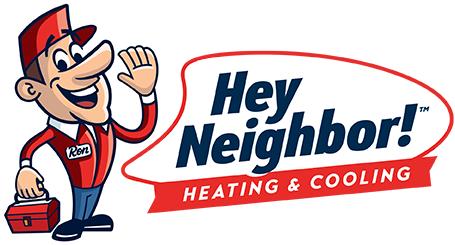If you’re sneezing your way through allergy season, choosing the right air filter for your HVAC system will improve your home’s air quality and will also ease your allergy symptoms. However, deciding which filter to choose can be as tricky as selecting the right allergy medicine. Here’s what to consider before you go shopping.
Traditional filters
These flat-panel filters have been around for years. They’re not fancy, but they’re affordable, and they won’t restrict airflow in your HVAC system as much as some of the others we’ll be talking about in this article. But, they’re not great at trapping allergens – capturing less than 10% of the airborne pollutants in your home. If your allergies aren’t terrible, it’s a smart move to give these a try first.
Pleated filters
The pleated filters have more surface area than a traditional flat filter and will filter up to 45% of the airborne allergens in your home – including pet dander, dust mites, and pollen. You can even use electrostatic filters that feature electrically charged materials that attract particles more effectively. The downside? They’re a bit more expensive and can restrict the airflow in your HVAC system. This means your system will work a little harder, and it’ll be harder to save money on your energy costs during allergy season. But, it can’t hurt to test one out and see if it helps ease your allergies.
High-Efficiency Particulate Air filters (HEPA)
These filters are great – they remove up to 98% of the pollutants in your indoor air. Unfortunately, they’re also thick to the point that they may require an extra fan to push air through them. That’s why HEPA filters are usually incorporated into a whole-house filtration system. Filtration systems can trap particles down to one-tenth of a micron in size, and while these filters cost the most, they also have the greatest impact on alleviating your allergy symptoms.
Clean Air Delivery Rate (CADR)
Before you make your decision, it’s a good idea to compare the CADR of the various filter types. You’ll pay more for a higher CADR, but your sinuses will thank you. CADR measures the effectiveness of air-cleaning appliances. The higher the CADR of the media, the more effective the unit is at cleaning your home of airborne particles and allergens. For example, a standard one-inch filter has a CADR of 12, while a whole-house electronic air cleaner has a CADR of 660.
Employ multiple strategies
• Finally, keep in mind that your system’s air filter should be just one part of your allergy battle plan. You’ll stand a much better chance of reducing your allergy symptoms if you use multiple tactics. Try adding several of these simple tips to your routine.
• Try to keep your pets off of the furniture and out of bedrooms. If your pets spend time outdoors, allergens will cling to their fur, and they’ll bring the particles in with them.
• Make a habit of showering before you go to bed to remove any allergens on your hair and skin that will cause you respiratory distress while you’re sleeping, causing you to wake in the morning feeling congested.
• Wash your clothing, towels, and sheets in very hot water to eliminate dust mites.
• Vacuum frequently. A simple way to reduce sniffle-inducing dust and allergens is to vacuum often – consider sweeping once a day if your allergies are severe.
• Keep your windows closed and limit your outdoor time in the spring and fall to reduce your exposure to pollen, spores, and other outdoor allergens.
• Be sure to change your filter often – at least quarterly, and once a month if you have multiple pets.
• Consider adding a whole-house filtration system for a more robust approach to preventing allergy attacks.
Every allergy sufferer and heating and cooling system is unique, so some trial-and-error will be required for you to see how different filters affect your allergy symptoms and your system’s operation. Before long, you’ll find the perfect filter for your home (and your nose)!


Comments are closed